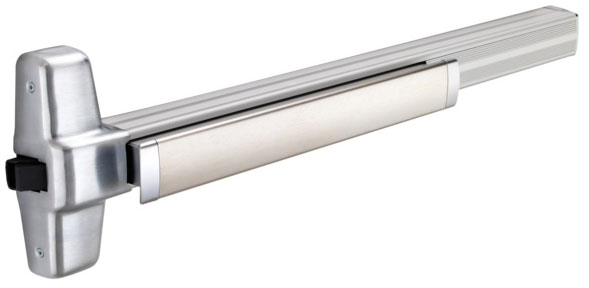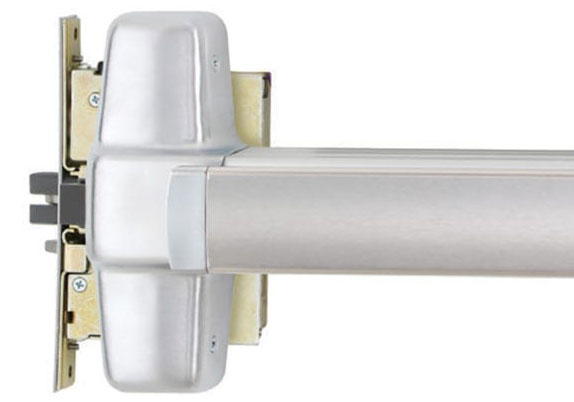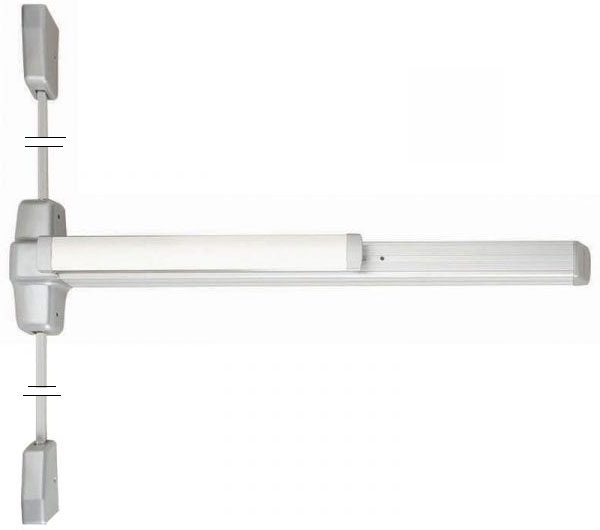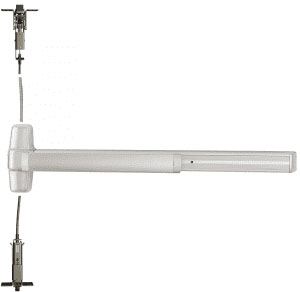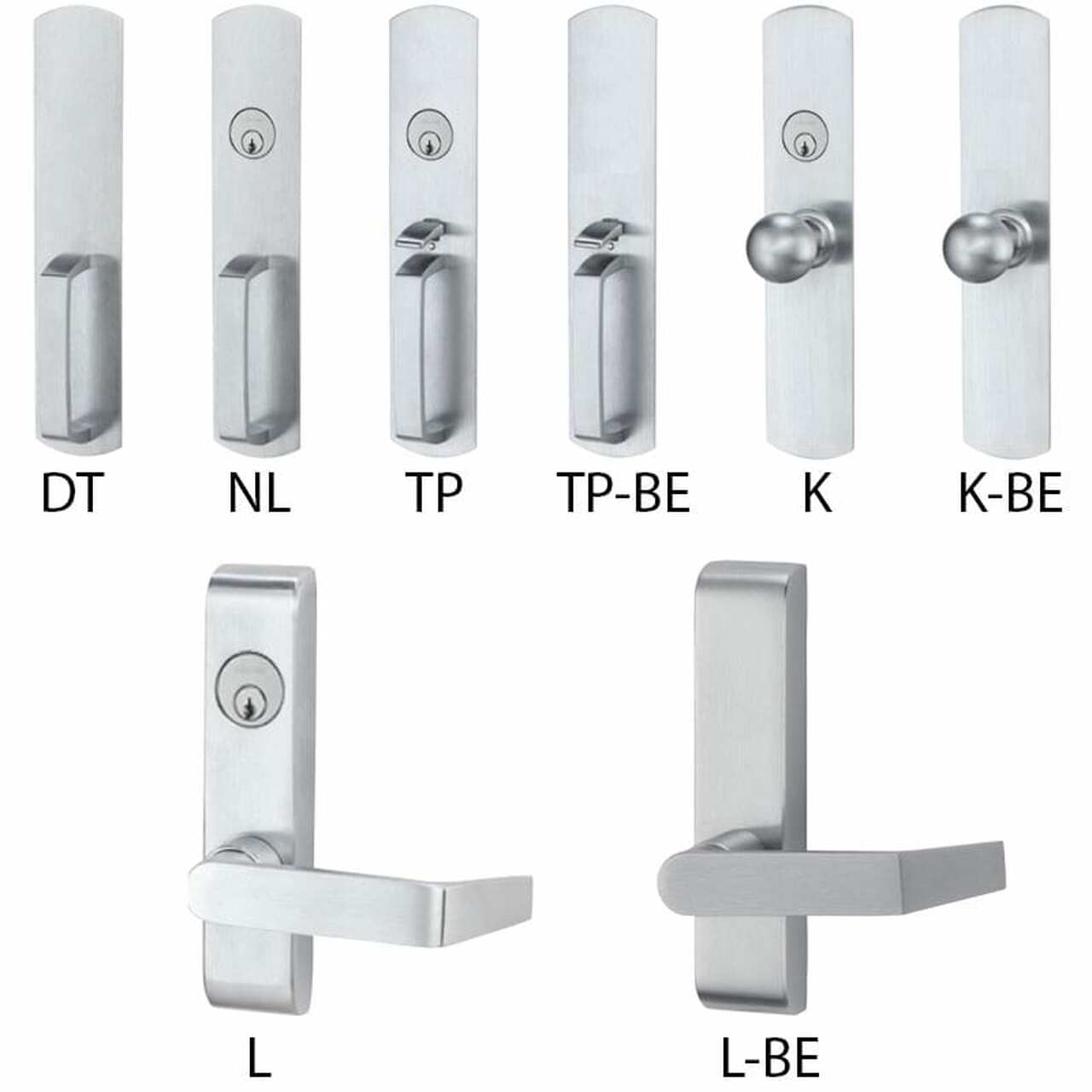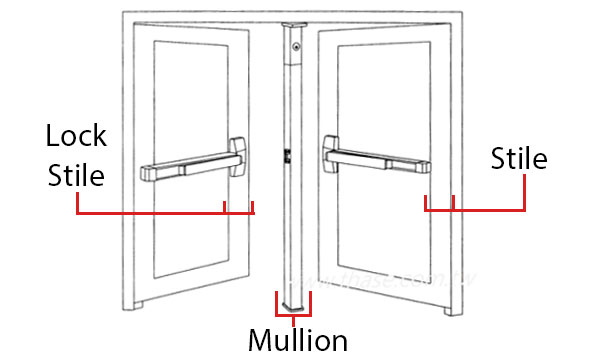Understanding Panic Bar and Fire Exit Device Terminology
Posted by Ben Lohn on 12th Jul 2021
Safe and durable emergency exit and fire exit doors are a critical part of any public space: they need to open easily to allow rapid egress of occupants in an emergency while maintaining normal function after long-term daily use. Use our easy terminology guide to help you navigate the world of exit devices and to streamline your ordering experience. For help with commercial door hardware, call or email our expert sales staff today to get the perfect panic bar for your project.
Hardware Styles
Rim Exit Device A rim exit device latches directly to the door frame at the point where the device is attached to the door. This is one of the strongest panic bar configurations due to the latch being directly in line with the bar and secured by the door frame. A rim exit device can be used on a single door or double doors with a mullion.
Mortise Lock Exit Device A mortise lock exit device is the sturdiest configuration for panic bars and exit devices. The latching mechanism is inside the door: the latch protrudes from the door and catches inside the door frame, greatly increasing strength and security. A mortise lock device can be used on a single door, double doors with a mullion, or with a double door with a vertical rod device.
Surface Vertical Rod Exit Device A surface vertical rod device is ideal for high-traffic exits where a single door would be insufficient and a mullion would impede safe egress. The device latches to the top of the door frame and floor instead of the side of the door. The whole device is attached to the surface of the door for easy installation.
Concealed Vertical Rod Exit Device A concealed vertical rod exit device has the same applications as a surface rod device, but with the added benefit of protecting the vertical rods by installing them inside the door. This is ideal for extremely high traffic areas where carts, dolleys, or gurneys frequently pass through the doors.
Concealed Vertical Cable Exit Device A concealed vertical cable exit device has the same appeal and applications as a concealed rod device: double doors subject to high traffic and constant abuse. Using a cable instead of a metal rod increases flexibility in field-adjustment without having to fully take apart the door.
Three-Point Latching Exit Device A three-point latching exit device is one of the strongest hardware configurations. By combining the Rim and Vertical Rod styles, a three-point device is able to latch a door to the floor, side and top of the door frame. This is compatible with all types of single or double doors.
What is Dogging?
All of our non-fire rated panic bars and exit devices provide dogging as a standard feature. A “dogged” door mechanically holds the latch in a retracted state so the door is not held shut by the strike(s). This is common in bars and restaurants: customers can enter the building during the day by simply pulling the exterior knob, handle, or trim. Employees can release the latch during non-business hours to limit access to the building. Because a dogged door can always be pulled open, never use in high wind areas or in places where security is a concern. Due to fire safety codes, fire-rated doors cannot be dogged.
Exterior Function and Trim
Exterior Function and Trim refers to the hardware on the opposite side of the door from your panic bar or exit device- think of the knob or handle used to enter a building. These range from simple metal plates for exit only doors to an array of knobs, pulls, and levers. For exterior doors that need to be locked, cylinders can be added so that your door meets fire codes while still providing the necessary security.
Stiles and Mullions
Many of our panic bars and exit devices are designed specifically for doors with narrow or wide stiles, or to be used as double doors with a mullion. A stile refers to the vertical wood or metal sections of a door. The lock stile - where the latch side of the panic bar is attached - is critical to the integrity of the door and to overall security. This is where the latch catches on the frame and needs to resist unintended opening. A mullion is a vertical part of the door frame that divides a large open into two smaller sections. By adding a mullion to new or existing construction, double doors can take advantage of the security and durability of rim or mortise lock exit devices.


